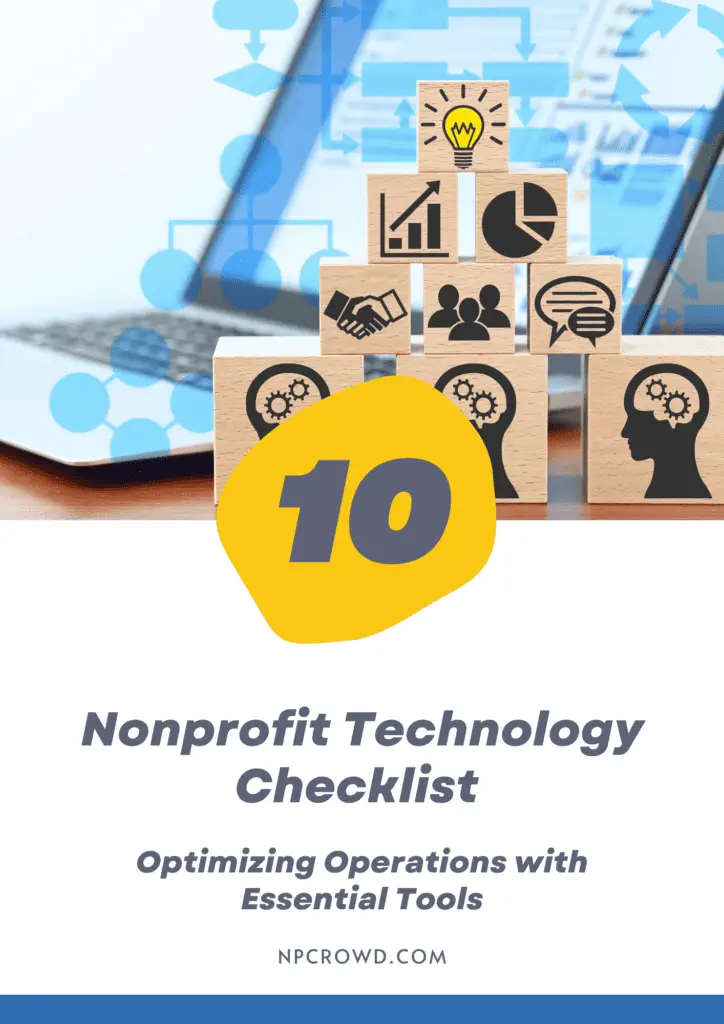Leadership Styles for Nonprofit Organizations
Disclaimer: This post may contain affiliate links. These links, if used and purchases made, we may earn a small commission. These affiliate programs do not impact the recommendations we make or the resources we refer you to. Our focus is on providing you the best resources for your nonprofit journey.
Four Nonprofit Leadership Styles
In general, there are four primary nonprofit leadership styles. Servant leadership, transformational leadership. transactional leadership, and charismatic leadership. The best organizations tend to exhibit both servant and transformational leadership.
Let’s find out more.
A Little Background on Four Popular Nonprofit Leadership Styles
People have different leadership styles which can affect the success of the team.
Historically, we have discussed four traditional leadership styles.
The first is a benevolent leader who cares about his or her employees and leads by example. They make sure that their employees are happy and understand what the company’s mission is.
The second type of leadership is a coercive leader who doesn’t really care about people but cares about results. They are strict and disciplined in order to get the best out of their employees.
Next is an autocratic leader who likes to be in control and make all decisions on their own without consulting others, because they like to be respected for their decisions.
Finally, democratic leaders delegate authority and include everyone in decision-making processes as much as possible.
Unlike the four approaches above, this article provides information on four nonprofit leadership styles that you should be aware of in order to lead your team. These styles are servant leadership, transformational leadership, transactional leadership, and charismatic leadership.
These new styles were defined in a 2018 study from Plymouth University in partnerships with Boardable, Concord Leadership Group, Bloomerang, and Donor Search.
The survey indicated that Servant leadership we the most popular style of leadership in nonprofits.

I found the difference between servant leadership and transformational leadership pretty interesting.
The Pros and Cons of the 4 Approaches to Nonprofit Leadership
1. Servant Leadership
What is servant leadership in a nonprofit?
Servant leadership is a way to lead a nonprofit organization based on the principles of servant leadership.
Servant leadership is based on the idea that leaders should serve others before themselves. It requires them to be humble, self-sacrificing and dedicated to the needs of others. Servant leadership is about empowering those around you and building them up.
Servant leadership can be used as a way for leaders to create an inclusive environment where people feel accepted and cared for.
What are the pros of servant leadership in nonprofits?
They make sure that the organization is never losing sight of its mission.
Servant leadership is a leadership philosophy that stresses the importance of serving others and making sure that the organization never loses sight of its mission. A servant leader has a genuine concern for other people and will work to make their jobs easier. This can be done by reducing unnecessary workloads, taking on some of their responsibilities, or providing emotional support to those who need it.
A servant leader also knows that everyone has value and worth in an organization and will work hard to cultivate an environment where they can grow in skill sets, knowledge, and confidence. They also understand that everyone can provide something valuable to the company and will work to give each person a chance to shine. Finally, they know that being a great leader means being selfless.
What are the cons of servant leadership in nonprofits?
Servant leadership is not effective in every type of organization. For example, it would be a bad idea for hospitals or military units to have this type of leadership because it compromises function for people’s feelings.
2. Transformational Leadership
What is transformational leadership in a nonprofit?
Transformational leadership in a nonprofit is the creation of a shared vision, collective will, and organizational commitment.
Transformational leadership has been proven to be the most effective way to create successful nonprofit organizations.
This type of management style can help with motivating staff, making decisions that are best for the organization, and creating a culture that is centered on service.
What are the benefits of transformational leadership in nonprofits?
Transformational leadership is often used as a way to increase the effectiveness of an organization. It can be used in nonprofits to increase their efficiency and effectiveness.
The challenge with transformational leadership can be that it takes more time than other styles of leadership. This doesn’t mean it’s not worth doing, however, because its success rate is higher than any other style of leadership. It’s just more time-consuming so it doesn’t work for every nonprofit out there.
Transformational leaders also have the ability to create a better organizational culture for both employees and clients alike.
What are the cons of transformational leadership in nonprofits?
Transformational leadership is a style of leadership that focuses on the ideas, feelings, and needs of the followers. It is best suited for organizations that are looking for a change.
Both positives and negatives can come from transformational leadership. One of the main disadvantages is that it can be hard to engage people who have been in their role for a long time because they feel threatened by the changes.
3. Transactional Leadership
What is transactional leadership in a nonprofit?
Nonprofits are often led by a board of directors as opposed to a single person. This means that the board is responsible for both the vision and operations of the organization.
Transactional leadership is one style of leadership that is used in nonprofit organizations. It often involves making requests, giving feedback, and setting specific goals to be met.
What are the benefits of transactional leadership in nonprofits?
Transactional leadership is when the leader and follower meet at a common goal. It is characterized by mutual respect and understanding.
Transactional leadership can be used in nonprofits to maintain respect between the leaders and followers. Followers will feel like they are heard by the leaders, which will give them a sense of belonging. Leaders will be able to create a culture that meets all expectations of those following them.
What are the cons of transactional leadership in nonprofits?
Traditionally, nonprofit organizations have relied on transactional leadership to get the job done. This type of leadership is characterized by an exchange of goods or services which is mutually beneficial for both parties.
The problem with this approach is that it doesn’t work well when we want to create a culture of caring from employees because it leaves out some critical human needs such as trust, affiliation, and identity
While transactional leadership can be effective in certain circumstances, there are many cons that come with this kind of leadership. One reason for its failure is that it does not take into account some important human needs such as trust, affiliation and identity
4. Charismatic Leaderships
What is charismatic leadership in a nonprofit?
Charismatic leadership is when an individual has the ability to attract and motivate people to join the cause. They also have the ability to create a culture and not just execute on it.
Charismatic leaders understand that people are motivated by different things for different reasons. With that knowledge, they can find something that motivates each person in their organization to benefit them as a whole.
What are the benefits of charismatic leadership in nonprofits?
Charismatic leadership is when a leader has a magnetic personality that is compelling and inspires others to follow. Charismatic leaders are not born, but they are made through training, practice, and discipline.
Charismatic leadership will enhance the performance of an organization by improving its culture and morale. Research shows that people who work for charismatic leaders are more committed to their tasks, feel more rewarded in their work, and have higher levels of satisfaction with their jobs.
What are the cons of charismatic leadership in nonprofits?
Charismatic leadership is a good thing, but it has its drawbacks too. It can be very difficult for the staff members because they may feel like they are not being heard or that their opinion does not matter.
Most people think that charisma is necessary for leaders to be effective in a nonprofit. But there are some disadvantages to charismatic leadership, which may make it hard for the staff members to feel heard or valued.
How Does Leadership Style Affect Organizational Culture
Leadership style can have a significant impact on organizational culture. For example, “Transformational leadership” as opposed to “Transactional leadership”. It is important for an organization to have a leader that will foster the type of culture they want for their company.
Leaders should not be afraid to experiment with different leadership styles to find which one is the best fit for their company and employees.
Conclusion: The Right Leadership Style for Your Organization
This article has explored the various leadership styles that exist in organizations. While there are many leadership styles, finding one that is appropriate for the organization is very important. The right leadership style not only benefits the organization but also benefits the leader and employees.
Leadership style can be a crucial factor in an organization’s success because it can impact how much a company makes, how much its employees are happy with their work, and how much those employees produce. Finding the right leadership style for an organization requires understanding what kind of structure you want to create and finding someone who will work well in that structure.







